1862 Battle of Harpers Ferry
Introduction
Text-to-speech Audio
Images
Map showing the Confederate attack on Harpers Ferry. Courtesy of the Civil War Trust.
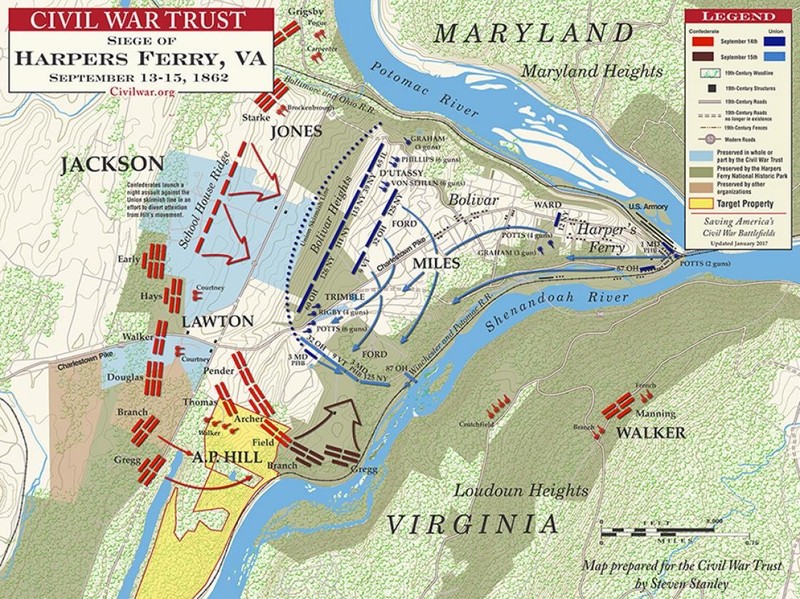
This 1858 engraving shows the geography of Harpers Ferry. The mountains, rivers, and railways were heavily contested between Union and Confederate forces. Courtesy of WVU Libraries, West Virginia and Regional History Center.
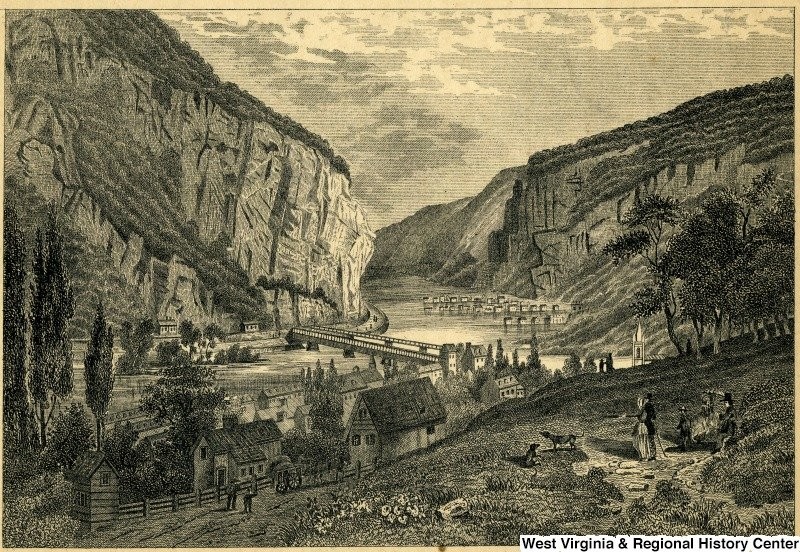
Harpers Ferry depicted under Union control in 1861. Courtesy of the Crossroads of War and NPS History Collection.
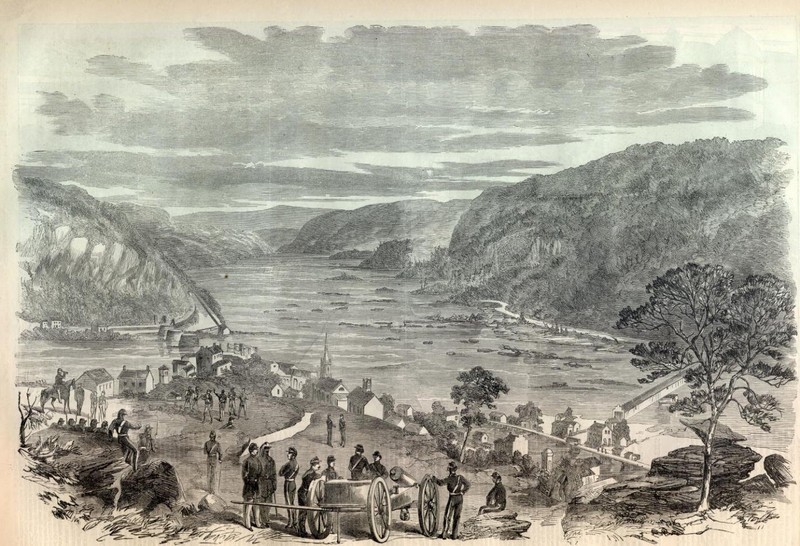
Remains of the United States Armory in Harpers Ferry, October 1862. Photo by Silas A. Holmes, courtesy the Crossroads of War and Library of Congress.
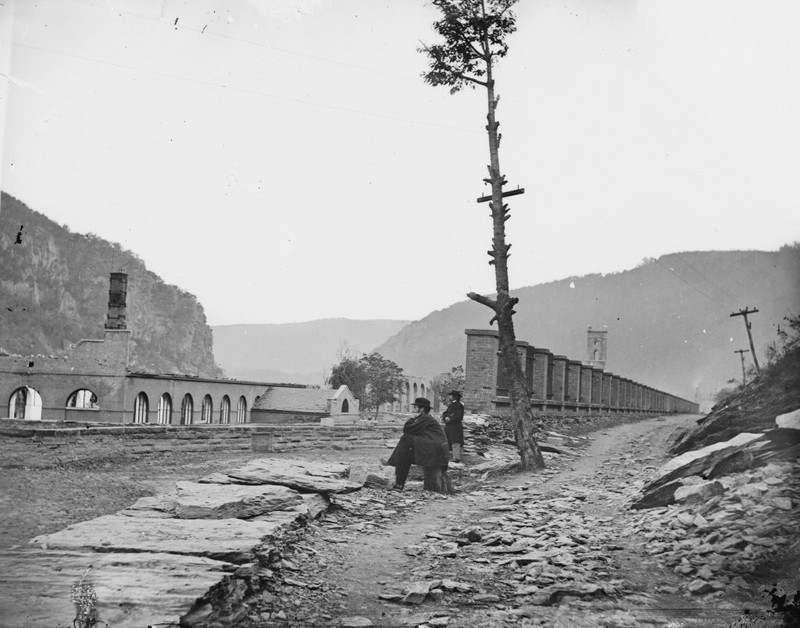
A view of the destroyed armory and bridge reconstruction, October 1862. Courtesy of the Crossroads of War and NPS History Collection.
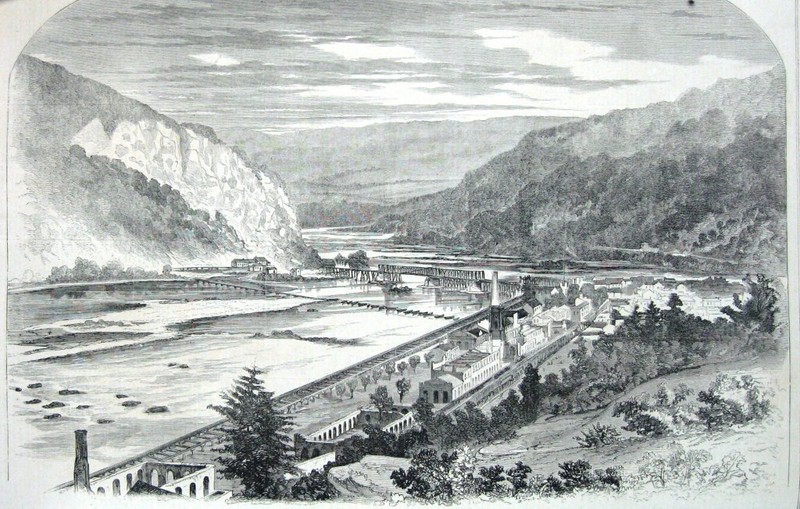
September 15, 1862 article clipping from the New York Tribune highlighting Lee's Maryland Campaigns and "a reported battle at Harpers Ferry." Courtesy of the Library of Congress.
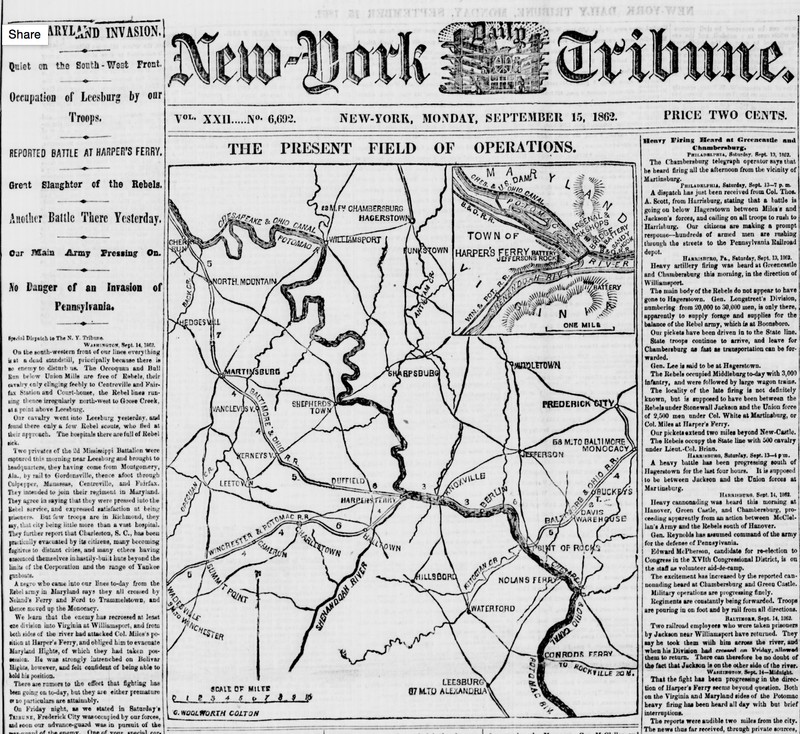
Backstory and Context
Text-to-speech Audio
There were four main reasons Harpers Ferry was a strategic target for the Confederate military:
- It was located near the Shenandoah Valley, where the Confederates held ground, and a mere 50 miles from the United States capital, Washington, D.C.
- It was built on the juncture of the Potomac and Shenandoah Rivers, which allowed transport by boat or ferry.
- It was the site of an important railroad bridge, which further increased its transportation utility.
- It contained a United States Armory (which was already famous due to John Brown's raid in 1859), which promised a sizeable stockpile of arms and ammunition to the side that could secure it.
The attack would come from multiple directions and converge on the insulated town. Harpers Ferry sits in a valley surrounded by steep, forested mountains. Union commander Colonel Dixon S. Miles, failed to realize the importance of the heights surrounding the town. With most of his forces in the town itself, Miles left only a small force at Maryland Heights to protect the surrounding landscape. This would prove disastrous, allowing the Confederates to easily gain the high ground and a tactical advantage. Jackson moved troops from western Maryland to School House Ridge, Brigadier General John G. Walker claimed Loudoun Heights with no opposition, and Major General Lafayette McLaws prepared to take on Union troops at Maryland Heights. The stage was set for a decisive Confederate victory.3
Confederate forces under Major General McLaws first met the Union army at the sparsely defended Maryland Heights, and easily took the position in a brief skirmish. During the struggle for these heights, other Confederate brigades noticed that positions west and south of the town weren't even defended. Seizing the initiative, Jackson placed his artillery all around the town and called Brigadier General A.P. Hill to arm Bolivar Heights. A fierce artillery barrage followed, along with a ground assault, heavily demoralizing the Union garrison. Surrounded by artillery and a force twice their size, Union leaders agreed to surrender the town and garrison on September 15. Miles was mortally wounded that day and the Brigadier General Julius White made the formal surrender, resulting in the capture of over 12,000 Union soldiers.4
Following Confederate victory, Jackson held Harpers Ferry until Lee called on his support in the Battle of Antietam, a bloody struggle on Northern ground that began on September 17. Jackson and his troops rushed to Sharpsburg, Maryland, and Hill was left in charge of processing Union prisoners until he was also called to Sharpsburg. Following the Battle of Antietam, Union troops regained the abandoned Harpers Ferry. The battle was an important Confederate victory that reinforced Jackson's tactical capabilities and bolstered supply lines. In the coming years, Harpers Ferry would flip between Union and Confederate occupation multiple times, demonstrating again its use as a strategic military and transportation post. Today, much of the battlefield is protected by the Harpers Ferry National Historical Park and the Civil War Trust.5
Sources
2. Noyalas, "Harpers Ferry during the Civil War," Encyclopedia Virginia; National Park Service, “1862 Battle of Harpers Ferry;" Pfanz, "Stonewall Marches Through the Shenandoah," Civil War Trust; Frye, "Stonewall Jackson's Triumph at Harpers Ferry," Civil War Trust.
3. Civil War Trust, “The Battle of Harpers Ferry;” National Park Service, “1862 Battle of Harpers Ferry.”
4. National Park Service, “1862 Battle of Harpers Ferry;” Frye, "Stonewall Jackson's Triumph at Harpers Ferry," Civil War Trust.
5. Civil War Trust, “The Battle of Harpers Ferry;” Noyalas, "Harpers Ferry during the Civil War," Encyclopedia Virginia.
Civil War Trust. “The Battle of Harpers Ferry.” Civil War Trust. December 16, 2013. Accessed September 2017. http://www.civilwar.org/battlefields/harpers-ferry.html.
Frye, Dennis E. "Stonewall Jackson's Triumph at Harpers Ferry." Civil War Trust. Accessed September 2017. https://www.civilwar.org/learn/articles/stonewall-jacksons-triumph-harpers-ferry
Pfanz, Don. "Stonewall Marches Through the Shenandoah." Civil War Trust. Accessed September 2017. https://www.civilwar.org/learn/articles/stonewall-marches-through-shenandoah
National Park Service. “1862 Battle of Harpers Ferry.” Harpers Ferry National Historical Park. Lasted modified April 10, 2015. Accessed September 2017. http://www.nps.gov/hafe/historyculture/1862-battle-of-harpers-ferry.htm
Noyalas, Jonathan A. "Harpers Ferry during the Civil War." Encyclopedia Virginia. Last modified October 27, 2015. Accessed September 2017. https://www.encyclopediaVirginia.org/Harpers_Ferry_During_the_Civil_War#its3
Images:
Civil War Trust. "Harpers Ferry Battle Map." Civil War Trust. Accessed September 2017. https://www.civilwar.org/sites/default/files/atoms/files/harpers-ferry-sept-12-15.pdf
Crossroads of War. "Harpers Ferry." Crossroads of War. Accessed September 2017. http://www.crossroadsofwar.org/galleries/harpersferry/
West Virginia History OnView. West Virginia and Regional History Center. WVU Libraries. Accessed September 2017. http://wvhistoryonview.org
New York Tribune. September 15, 1862, p. 1. From the Library of Congress, Chronicling America: Historic American Newspapers site. Accessed September 2017. http://chroniclingamerica.loc.gov/lccn/sn83030213/1862-09-15/ed-1/seq-1/
